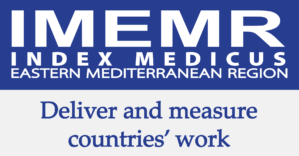Comparative outcomes of Piperacillin-Tazobactam versus Ceftriaxone in managing spontaneous bacterial peritonitis in cirrhotic patients: An observational study
DOI:
https://doi.org/10.53685/jshmdc.v6i1.358Keywords:
Spontaneous Bacterial Peritonitis,, Piperacillin-Tazobactam,, Ceftriaxone, CirrhosisAbstract
Background: Spontaneous bacterial peritonitis (SBP), a serious complication of liver cirrhosis, demands prompt antibiotic treatment, but rising resistance to ceftriaxone has spurred interest in alternative therapies.
Objective: To compare the treatment outcomes of Piperacillin-Tazobactam versus ceftriaxone in spontaneous bacterial peritonitis among cirrhotic patients.
Methods: This comparative observational study was conducted from 1st January to 1st July 2023 at the Services Institute of Medical Sciences, Lahore, Pakistan. A total of 218 cirrhotic patients, 18-60 years of age, diagnosed with SBP based on an ascitic fluid polymorphonuclear (PMN) count >250/μL, were enrolled using non-probability consecutive sampling. On the physician’s discretion, patients receiving Piperacillin-Tazobactam (4.5 g IV every 8 hours) were allocated to Group A (n=109) and those receiving Ceftriaxone (2 g/day) were allocated to Group B (n=109). Treatment response was observed on day five by assessing clinical improvement and repeat ascitic fluid analysis. A Chi-square test was conducted using SPSS version 22 for statistical analysis.
Results: The mean age of the study population was 35.7 ± 6.5 years, with 61.93% male patients. A higher proportion of patients treated with Piperacillin-Tazobactam (75.2%) showed resolution of SBP by day 5 compared to those receiving Ceftriaxone (62.4%). Although there was a difference in the response to the treatments (χ²=3.61, p=0.0574), it was statistically not significant. Across stratified subgroups, age, gender, symptom duration, Child-Pugh score, and PMN count for the Piperacillin-Tazobactam (group A) showed higher, though statistically insignificant, treatment response rates compared to Ceftriaxone (group B).
Conclusion: Piperacillin-Tazobactam showed a higher, though statistically insignificant, resolution rate of SBP compared to Ceftriaxone. This trend was consistent across age groups, gender, symptom duration, Chil-Pugh score, and PMN count, suggesting a potential clinical advantage.
References
Ye F, Zhai M, Long J, Gong Y, Ren C, Zhang D, et al. The burden of liver cirrhosis in mortality: Results from the global burden of disease study. Front Public Health. 2022; 10: 909455. DOI: https://doi.org/10.3389/fpubh.2022.909455
Sepanlou SG, Safiri S, Bisignano C, Ikuta KS, Merat S, Saberifiroozi M, et al. The global, regional, and national burden of cirrhosis by cause in 195 countries and territories, 1990–2017: A systematic analysis for the global burden of disease study 2017. Lancet Gastroenterol Hepatol. 2020; 5(3): 245-266. DOI: https://doi.org/10.1016/S2468-1253(19)30349-8
Zheng XY, Xu XJ, Liu YY, Xu YJ, Pan SX, Zeng XY, et al. Age-standardized mortality, disability-adjusted life-years and healthy life expectancy in different cultural regions of Guangdong, China: A population-based study of 2005–2015. BMC Public Health. 2020; 20: 1-20. DOI: https://doi.org/10.1186/s12889-020-8420-7
Aithal GP, Palaniyappan N, China L, Härmälä S, Macken L, Ryan JM, et al. Guidelines on the management of ascites in cirrhosis. Gut. 2021; 70(1): 9-29. DOI: https://doi.org/10.1136/gutjnl-2020-321790
Gruszecka J, Filip R. Epidemiological study of pathogens in spontaneous bacterial peritonitis in 2017–2024—a preliminary report of the university hospital in South-Eastern Poland. Microorganisms. 2024; 12(5): 1008. DOI: https://doi.org/10.3390/microorganisms12051008
Maccauro V, Airola C, Santopaolo F, Gasbarrini A, Ponziani FR, Pompili M. Gut microbiota and infectious complications in Advanced Chronic Liver Disease: Focus on spontaneous bacterial peritonitis. Life. 2023; 13(4): 991. DOI: https://doi.org/10.3390/life13040991
Elzouki AN, Hamad A, Almasri H, Ata M, Ashour A, Othman M, et al. Predictors of short-term mortality following first episode of spontaneous bacterial peritonitis in hospitalized cirrhotic patients. Cureus. 2021; 13(10): e18999. DOI: https://doi.org/10.7759/cureus.18999
Liu J, Yang D, Wang X, Asare PT, Zhang Q, et al. Gut microbiota targeted approach in the management of chronic liver diseases. Front Cell Infect Microbiol. 2022; 12: 774335. DOI: https://doi.org/10.3389/fcimb.2022.774335
Shetty A, Raman R, Pemmada V, Musunuri B, Shetty S, Pai CG, Bhat G. Spontaneous bacterial peritonitis recurrence on norfloxacin secondary prophylaxis. Arab J Gastroenterol. 2024; 25(4): 345-348. DOI: https://doi.org/10.1016/j.ajg.2024.09.004
Alhilly AA and Alyouzbaki AZ. Microorganisms and antibiotic sensitivity/resistance patterns in spontaneous bacterial peritonitis. Rawal Med J. 2023; 48(3): 622-629. DOI: https://doi.org/10.5455/rmj.20230118073548
Zaman A. Carbapenem vs. third-generation cephalosporin for spontaneous bacterial peritonitis. NEJM J Watch. 2020: https://www.jwatch.org/na51973/2020/07/15/carbapenem-vs-third-generation-cephalosporin-spontaneous. Accessed 15th March 2025
El Sahly HM. Cefotaxime, Ceftriaxone, or Ciprofloxacin for Spontaneous Bacterial Peritonitis. NEJM J Watch. 2023: https://www.jwatch.org/na55999/2023/04/25/cefotaxime-ceftriaxone-or-ciprofloxacin-spontaneous. Accessed 5th April 2025
Bhat G, Vandana KE, Bhatia S, Suvarna D, Pai CG. Spontaneous ascitic fluid infection in liver cirrhosis: bacteriological profile and response to antibiotic therapy. Indian J Gastroenterol. 2013; 32: 297-301. DOI: https://doi.org/10.1007/s12664-013-0329-y
Kim SW, Yoon JS, Park J, Jung YJ, Lee JS, Song J, et al. Empirical treatment with carbapenem vs third-generation cephalosporin for treatment of spontaneous bacterial peritonitis. Clin Gastroenterol Hepatol. 2021; 19(5): 976-986. DOI: https://doi.org/10.1016/j.cgh.2020.06.046
Liu J, Gao Y, Wang X, Qian Z, Chen J, Huang Y, et al. Culture-positive spontaneous ascitic infection in patients with acute decompensated cirrhosis: Multidrug-resistant pathogens and antibiotic strategies. Yonsei Med J. 2020; 61(2): 145-153. DOI: https://doi.org/10.3349/ymj.2020.61.2.145
Sheikh MI, Yaqub MU, Saeed F, Maqsood A, Raza MA. Comparative efficacy of intravenous ciprofloxacin against ceftriaxone in spontaneous bacterial peritonitis patients: intravenous ciprofloxacin against ceftriaxone in spontaneous Bacterial Peritonitis Patients. Pak J Health Sci. 2024: 180-184. DOI: https://doi.org/10.54393/pjhs.v5i11.2047
Yim HJ, Kim TH, Suh SJ, Yim SY, Jung YK, Seo YS, et al. Response-guided therapy with cefotaxime, ceftriaxone, or ciprofloxacin for spontaneous bacterial peritonitis: A randomized trial: A validation study of 2021 AASLD Practice Guidance for SBP. Am J Gastroenterol. 2023; 118(4): 654-663. DOI: https://doi.org/10.14309/ajg.0000000000002126
Santoiemma PP, Dakwar O, Angarone MP. A retrospective analysis of cases of spontaneous bacterial peritonitis in cirrhosis patients. PLoS One. 2020; 15(9): e0239470. DOI: https://doi.org/10.1371/journal.pone.0239470
Quickert S, Würstle S, Reuken PA, Hagel S, Schneider J, Schmid RM, et al. Real-world effectiveness of piperacillin/tazobactam with and without linezolid for spontaneous bacterial peritonitis. Dig Dis. 2022; 40(6): 777-786. DOI: https://doi.org/10.1159/000522259
Pimentel R, Leitão J, Gregório C, Santos L, Carvalho A, Figueiredo P. Spontaneous bacterial peritonitis in cirrhotic patients: A shift in the microbial pattern? A retrospective analysis. GE Port J Gastroenterol. 2022; 29(4): 256-266. DOI: https://doi.org/10.1159/000518585
Ahmad I, Hussain MS, Akhtar MS. Microbial spectrum and antibiotic sensitivity in cirrhotic patients with spontaneous bacterial peritonitis. Pak J Med Health Sci. 2021; 15(11): 3123–3125. DOI: https://doi.org/10.53350/pjmhs2115113123
Downloads
Published
How to Cite
Issue
Section
License
Copyright (c) 2025 Azhar Hussain , Muhammad Umer Sheikh, Ambreen Tauseef, Hafiz Ghulam Mohayudin, Hira Sadaqat, Waqar Ahmed Siddiqui

This work is licensed under a Creative Commons Attribution-NonCommercial 4.0 International License.
You are free to:
- Share — copy and redistribute the material in any medium or format
- Adapt — remix, transform, and build upon the material
- The licensor cannot revoke these freedoms as long as you follow the license terms.
Under the following terms:
-
Attribution — You must give appropriate credit, provide a link to the license, and indicate if changes were made. You may do so in any reasonable manner, but not in any way that suggests the licensor endorses you or your use.
-
Non Commercial — You may not use the material for commercial purposes.
-
No additional restrictions — You may not apply legal terms or technological measures that legally restrict others from doing anything the license permits.




















